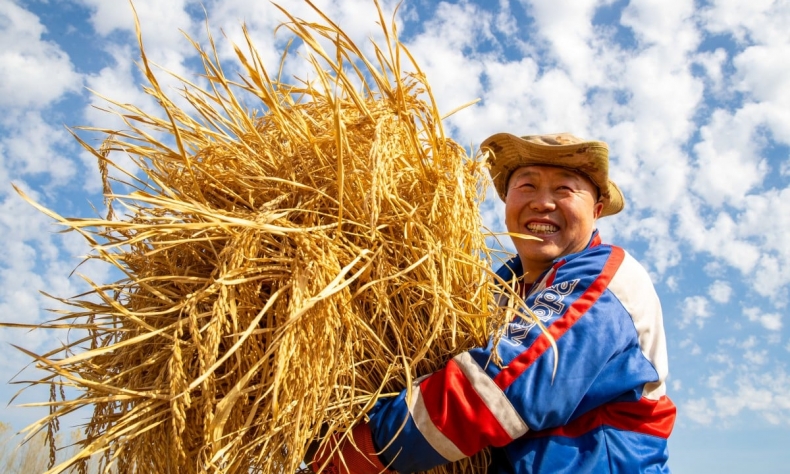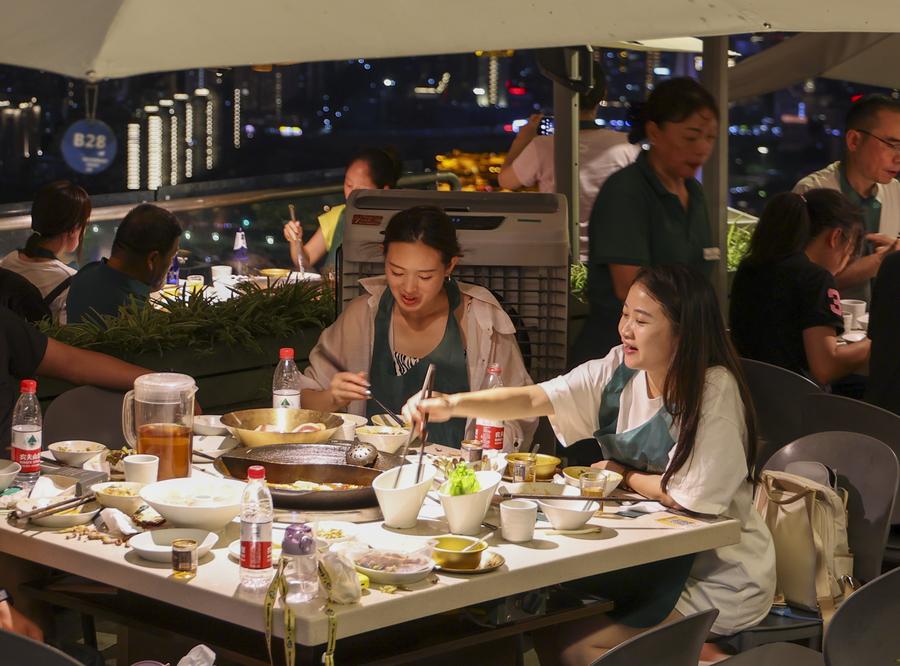From Farm to Fork: Self-Sufficiency in Food Security

As a country with a population of 1.4 billion, ensuring food security is an important foundation for China’s economic development, social stability and national security.
With just 9 percent of the world’s arable land, China must feed nearly 20 percent of the global population. This is a major reason why the country has long prioritized food security. Chinese President Xi Jinping has called on citizens to protect farmland as a national treasure, just like the giant panda is protected. He has also stressed the importance of self-sufficiency—ensuring that “the Chinese bowl is filled with Chinese grain,” keeping food security firmly in the nation’s own hands. Beijing Review recently interviewed Gao Yun, a research fellow at the Institute of Agricultural Economics and Development, the Chinese Academy of Agricultural Sciences, on safeguarding China’s food supply. Edited excerpts from the conversation follow:
Beijing Review: Traditionally, China has considered starches such as grains, beans, potatoes and sweet potatoes to be its staple foods, making up the main portion of people’s diets. President Xi has advocated taking a broader view, calling for diversifying food sources, such as by increasing the production and consumption of seafood. Why is this important?
Gao Yun: As the composition of diets has improved in both rural and urban areas of China, the ratio of starch foods to total food consumption has gradually decreased, while the consumption of animal-based foods, such as meat, eggs and milk, has steadily increased.
In addition to farmland, China has a wealth and diversity of environments capable of producing food, including forests, grasslands and waterways.
The country has 230 million hectares of forests, capable of producing a large amount of forest vegetables, fruits, oilseeds and animal products. Bamboo shoots, walnuts, chestnuts and tea oil, which we are familiar with, have long been traditional foods for Chinese people. China is the second largest grassland country in the world. Grasslands can provide high-quality livestock products and also produce forage, providing stable, high-quality feed for raising livestock.
China also has 27 million hectares of freshwater aquaculture bases in inland areas and 473 million hectares of marine aquaculture farms, making it the world’s largest producer and exporter of aquatic products.
Calling for diversifying and expanding food sources from traditional farmland to these environments is an effective way to improve the supply of food and break through the hard constraints of resources and environment. It also assists in meeting demand for diversified, refined, nutritious and environmentally friendly food. For example, seafood is suitable for people who need to protect their cardiovascular system, promote brain development and protect vision, especially children and seniors. Shrimp is an ideal food for people who need a high-protein low-fat diet.

The concept of diversifying China’s diet has also opened up new ideas for food manufacturing, including the creation of a food protein resource supply system based on efficient biological manufacturing of microbial proteins and the replacement of traditional agricultural production methods with factory fermentation production. These technologies and techniques could all become future sources of food.
The diversification of China’s food sources is in line with the diversification of diets that began decades ago and remains in progress. It facilitates the transition from providing adequate food to providing nutritious and high-quality food.
President Xi has reiterated that the total area of China’s cultivated land must stay above the red line of 120 million hectares. Why does this red line exist?
The red line of 120 million hectares of cultivated land ensures that China’s food security is not highly reliant on the international market. Food-sourcing decisions cannot be based solely on cost comparisons of domestic producing versus importing. Currently, conventional and unconventional factors such as geopolitical conflicts, trade protectionism and extreme weather events are intertwined, leading to increased uncertainty and risks in the global food industry chain and supply chain. As a country with a population of 1.4 billion, ensuring food security is an important foundation for China’s economic development, social stability and national security.
Another important reason for maintaining a red line is that, in recent years, China’s urbanization rate has continued to increase, reaching 67 percent by the end of 2024. That means cities are still expanding, placing increasing pressure on farmland and necessitating nationally mandated protection. Agricultural authorities are also working to improve the quality of existing farmland to increase yields.
How does China balance urbanization and farmland protection?
Balancing urbanization and farmland protection is a challenge many countries faced as they develop economically, and the main solution lies in promoting intensive land use. This strategy covers urban land as well as farmland and off-farm land in rural areas.
The government is accelerating the construction of a management system for farmland protection, and any changes in the quantity, nature and location of land must be reflected on a spatial planning map. This way, land can be managed in a systematized way. Through this process, the protection of arable land is undergoing a digital transformation.
The central authorities are transferring out low-quality farmland to be used for other purposes. New provincial-level plans are also consolidating land management and allocating purposes based on location, soil type and access to water.
 Facebook
Facebook
 Twitter
Twitter
 Linkedin
Linkedin
 Google +
Google +










